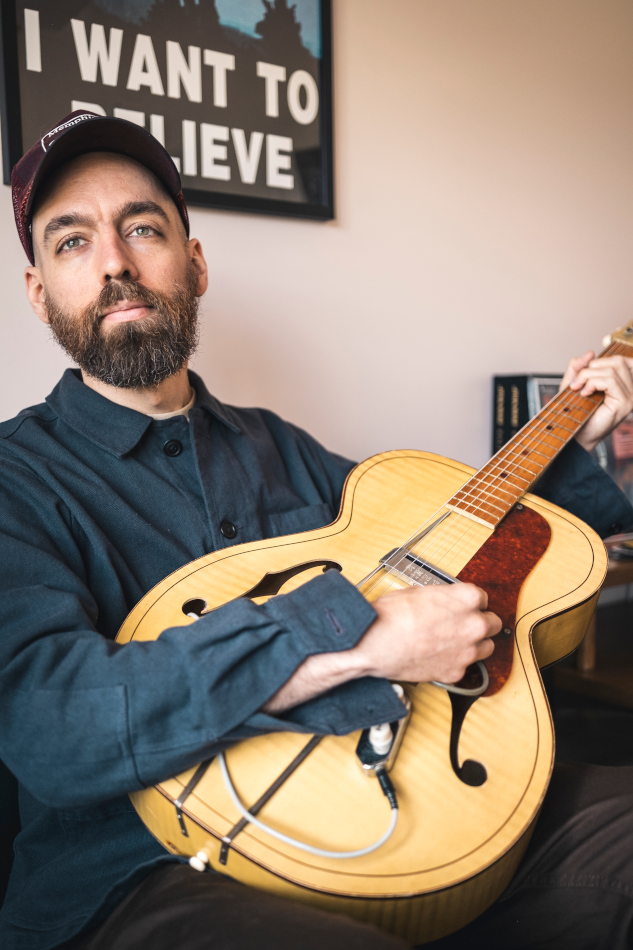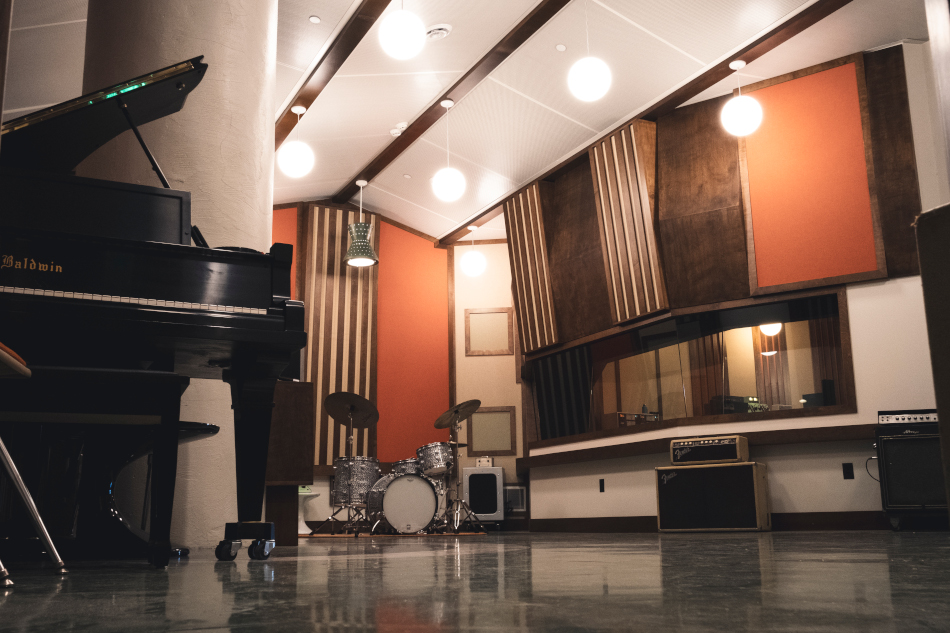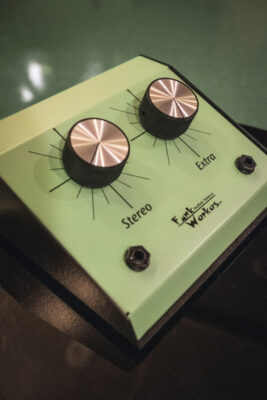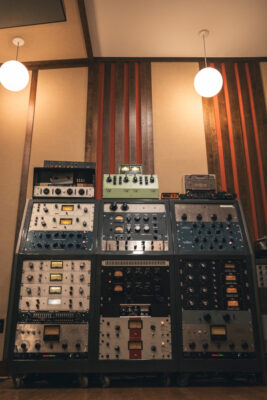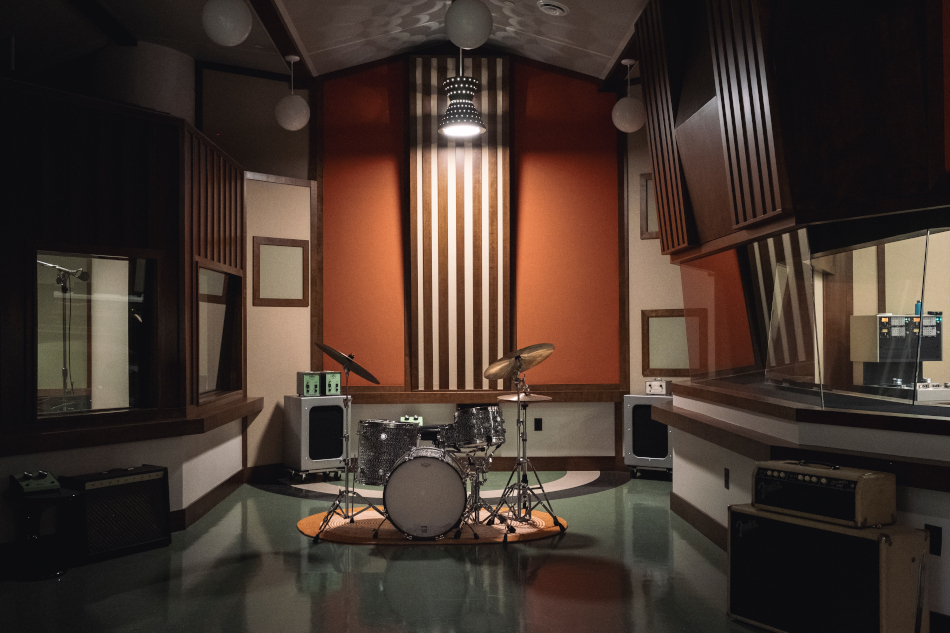Sweet Spot: Southern Grooves — A Memphis Studio Masterpiece
Where do grooves grow? If you’re anywhere near this Tennessee musical mecca, it’s clear: the Memphis studio called Southern Grooves.
An analog attitude pervades the facility, which sprang from the mind of Matt Ross-Spang and his deep experiences spanning the studio landscape. A producer, engineer, and mixer, Ross-Spang is a 2X Grammy-award winner for engineering singer/songwriter Jason Isbell on the 2015 album Something More than Free and 2017’s The Nashville Sound. Additional credits include legends like Elvis Presley, Lou Reed, Al Green, John Prine, Drive-By Truckers, and Iron & Wine.
With every classic studio Ross-Spang worked in, he picked up another piece of audio inspiration. As each room helped him to listen and work in new ways, he was quietly jotting down design and workflow concepts like song ideas.
The result was Southern Grooves, a 3,000 sq. ft. studio that openly declares his love for the craft of recording. As soaked in tradition as it is original in execution, the facility is Ross-Spang’s vessel for creative experimentation. Calling it a “Dr. Frankenstein’s lab”, he makes it clear that being booked 24/7 is not the business model: Instead, the point is to give musicians and audio pros a place where they’re fully free to push musical boundaries.
Ross-Spang’s philosophy isn’t just reflected in the rooms’ pleasing designs and acoustic treatments. As you might expect, the gear list is highly curated, centered around a 1969 Spectra Sonics console handcrafted by Welton Jetton (Stax Records, Ardent Studios). From monitors to mic pres and EQs, the signal path is made for immaculate perception.
The watch word for recording at Southern Grooves: reverence. Read on for the inside scoop from Ross-Spang on this stunning new Memphis room.
Facility Name: Southern Grooves
Location: Crosstown Concourse, Memphis, TN
Date of Birth: Major construction was completed October 2022; we began recording paying customers in February 2023.
Facility Focus: Tracking/Mixing
Neighborhood Advantages: Memphis’ Crosstown Concourse where our studio is located is almost impossible to describe without visiting, but it was originally built in the early 1900’s as a Sears Distribution center. Years ago the building, which is roughly 1.5 million square feet, was repurposed to be a “vertical village” but it’s really a beacon for a creative community. Crosstown has restaurants, a radio station (WYXR), apartments, full healthcare, a YMCA, multiple music venues, and even a high school (to name just a few!).
My next-door neighbors at Crosstown include the noted film director Craig Brewer (Hustle & Flow), Memphis’s finest photographer Jamie Harmon, and the Memphis Listening Lab which is a public music library that houses one the world’s largest vinyl collections as well as Hi-Fi Eggleston Speakers.
As you know there are many times in the studio when you are just working with the singer or someone performing a solo, and you need to clear out the control room and just work one-on-one. Most folks could never leave the studio during this time, but at Crosstown they have a whole other world to explore right outside the door.
Engineering Excellence: My production, engineering, and mixing experiences in so many notable facilities were a major factor in the building of Southern Grooves. I feel very fortunate to have worked in so many incredible studios.
Every time I work somewhere new I hear and work differently. After so many studios your ear and brain identify the elements that you connected with and the things that didn’t. I’ve always loved the older acoustic aesthetic of wood burlap and a live tile floor. So I knew I wanted to use those and avoid the acoustical tile of the ‘50’s or more modern solutions.
I really grew up and learned the craft in two of Sam Phillips‘ designed rooms (Sun and Sam Phillips Recording) . He was a big proponent of avoiding parallel services and undulated ceilings, so I wanted to incorporate those elements as well.
Making Magic: I wanted Southern Grooves to be a “magic room”, and we got lucky! I was very lucky to work with a great studio design team: Steve Durr, Matt Schlachter and Ken Capton of Solar2.
I probably drove them a little crazy with long calls and endless questions but I really wanted this studio to be an extension of my love of studios and recording. I couldn’t have asked for better partners. They really understood what I was going for and they all went above and beyond to make it right. I sort of turned into Howard Hughes and focused even on the smallest details with them.
I love the mid-century modern style and it’s rooted in function/simplicity, but you don’t see it much in studios. That’s why we have built custom gobos, DIs, and a cue system. Any modern versions didn’t fit the aesthetic or technical points I wanted to capture. If you see the cue system we made you can see how far down the rabbit hole we went!
Spectra Sonics Sound: Spectra Sonics is based in Ogden, Utah. They originally (like Universal Audio) would sell the parts for you to build your own consoles. Very early on Welton Jetton, an electronics wiz in Memphis, would order these parts and build custom consoles. Ardent Studios and Stax both used several of his custom Spectra consoles.
In the early ‘70s, Welton stopped using Spectra parts and started using early op amp designs. My console was one of the last Spectra Sonics/Auditronics builds. It’s a 20×8 with 3-band inductor EQ and is 100% discrete electronics. My console was originally purchased in Memphis with a Scully 100 2” 16 track. It was installed in Canada since 1969 until I purchased it and brought it back home in 2014. I love the sound of it so much I actually had a sidecar frame built up so I could travel with the board!
OMG Outboard: I am obviously a big fan of analog gear and especially vintage gear but I also try not to be a hoarder. I like to just keep the pieces that I’d prefer to not live without! So all the pieces in the rack get used quite frequently. If I find a piece isn’t getting used much I will usually sell it.
I am a big fan of Spectra Sonics, as you can see — I have four vintage 610 comp/limiters and two modern V610s. They are incredible peak limiters/compressors that can be transparent to crunchy heaven! The POM 670 (Fairchild 670 mkII) is another piece that I use every session. I finally caved and got a second unit because they’re a must-have for me on every mix and tracking session. They are both outfitted with vintage transformers.
The green sidecar on top of the rack is a custom unit built by Greg Pace of FunkWerkes. It has four Universal Audio 100D tube preamps, two originally came from Sam Phillips Recording and the other two are from FAME Recording Studios. They each have the vintage UA passive EQs. The sidecar has four direct outs as well as a passive summing mixer. I also have four Pulse-Tec EQs. If I could, I would have one for every channel! They are just incredible EQs.
Monitoring Environment: I have been using the ProAc Studio SM100’s since my buddy Jeff Powell got me hooked on them in 2015. There haven’t been too many large speaker systems that impressed me until I worked at House of Blues in Nashville and heard the Ocean Way 415Ts.
I have never connected so immediately to a speaker like I did with (the ProAc SM100). Every classic song I’ve always loved played back with that same emotional connection, and everything I recorded with them translated back beautifully on other speakers. I knew they were my dream speakers for the new studio and by some form of luck I was able to grab a used pair! They are tri-amped with a Spectra Sonics 202 system.
Live Room Vibes: One of my favorite comments I constantly get is that the studio feels lived in already. Even though the studio is only a little over a year old and it feels like it’s been making records for much longer. It’s easy to buy materials to tweak acoustics but it’s really hard to “fix the feeling” of a room.
If you ever get a chance to visit rooms like Sun Studio, Motown, FAME, or RCA Studio A you realize they were made for multiple folks to record in the same room at the same time and sound great without headphones. That’s what we went for as well. Musicians can feel the difference when they are playing in a room.
Why Southern Grooves = “Dr. Frankenstein Lab”: The studio is really an extension of the person behind the board. They are entwined. You can have the best gear and room in the world, but if you don’t have an engineer with the right attitude to create, it’s all for naught.
I tried to create a studio where it’s easy for anyone to come in and just create. Every room has an acoustic purpose and is wired to the patchbay – like the lounge has this wonderful bright reflection in it that’s perfect for snare, vocals or acoustic guitars. The real echo chamber is a big inspiration for folks too.
Dream Session: Tom Jones backed by the Memphis Boys, the Swampers, and Hi Rhythm.
— Interview by David Weiss. David is an Editor for SonicScoop.com, and has been covering pro audio developments for over 25 years. He is also the co-author of the music industry’s leading textbook on synch licensing, “Music Supervision, 2nd Edition: The Complete Guide to Selecting Music for Movies, TV, Games & New Media.” Email: david@sonicscoop.com
Please note: When you buy products through links on this page, we may earn an affiliate commission.








